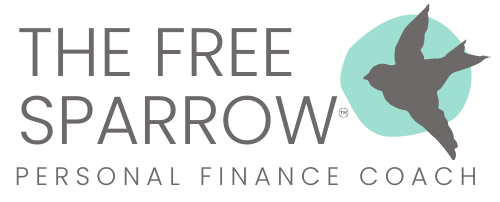It's Okay to Fail
Creating a healthy personal budget is the first mile of your FIWO journey
As we begin the journey of setting yourself up for FIWO we need to start with a hard look inward at our basic personal budget. Whether you are focused on firing your boss for good or just ensuring that you have a fu*k you fund (have a large cushion to feel comfortable going without work for a year or two), the very first step in a look at your actual spend and savings each month. The relationship between these two is called savings rate. The higher the rate the faster the time to retirement… no matter your income. The average American has a savings rate of 5-7%. Many FIRE folks have upwards of 86% before they retired. My husband and I have around 56%. You must know your number and seek to improve it with by cleaning up your personal budget.
Once you know your savings rate, for many of us, it will be shocking. But don’t freak out! There really can be a lot of money you can save. It is amazing how much money can be wasted on purchases under $10 that add up in the hundreds. It is easy to think “I will fail at budgeting, there is no way I can increase my savings rate”. But you are wrong. Remember just like when one is training for a marathon, you will fail often at your run time. But daily practice and attention will eventually pay off.
Step 1: There are many personal budgeting apps online, but the one I recommend for household budgeting is mint.com. Create an account and load in all your financial information in: connect your bank, credit cards, loan (car and home), and investments account information. Load anything that you add or expense money from. I have used this platform for more than 10 years and find it to be very secure. This step may take several hours or up to a day to populate all information.
Step 2: Look at the Trends Tab > By Category. As you have just loaded your information in this program you may only see a month's worth of data, but this is still a great place to start. Go through each transaction and categorize it if the auto category give by Mint is incorrect. You can even tell Mint to recognize this category when it shows up again.
Ahhh, now have a glass of wine because that was the hard part. Take some time to reflect on what you have spent in the last month. Think about what you have earned after taxes. Do these two numbers balance or tip toward debt?
I think about my expenses in two categories: Core and Discretionary. Examples of Core expenses are anything that keeps you alive and able to earn income.
Core Expenses
Medical expense (usually paid pre tax via your employer)
Housing: Rent or Mortgage
Utilities (Electricity, water, sewer. NOT TV)
Grocery (not restaurants)
Child Care (dog care does not count, sorry)
Auto payment and maintenance
Phone bill. (buying a new phone every year is not a Core Expense)
Auto and homeowners / renters insurance.
Discretionary Expense
Absolutely anything other than Core Expenses.
I am going to let this all sink in for awhile. The next post we will dig into what a balanced budget looks like, setting up your budget, savings goals, and tips to lower your core expenses.
Happy Living!
Hi! Welcome to my blog. This is an account of our journey to FIWO (financially independent, work optional) and tips and hacks we have learned to get us there faster. If you just joined us, please start from the first post on this journey: Is A Life Without a 9-5 Job Possible for Me
Photo of me in Sudan. I think I was around 2 years old.
